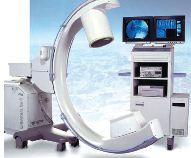Diagnostic Procedures
Cervical Facet Joint Diagnostic Nerve Blocks: Cervical facet diagnostic nerve blocks are the only diagnostic test that has been proven by controlled randomized double blind studies to be specific and reliable in diagnosing the cervical facet joint as the source of chronic neck pain and headaches.
It is extremely difficult to isolate a specific anatomical structure that can be specifically and reliably implicated as the “pain generator” or the cause of headaches and neck pain following a traumatic accident. Imaging techniques are currently being used to identify anatomical deformities. These deformities however, cannot be identified as the definitive cause of a patient’s specific headache and neck pain complaints. Conversely, a lack of anatomical abnormalities seen on radiographs cannot definitively rule out a structural injury causing neck pain or headaches.
A ll diagnostic imaging techniques i.e. CT Scan, x-rays, and MRI scans are performed to image specific anatomical structures. None of these imaging techniques have been adequately studied and found capable of reliably investigating the source of headaches and neck pain following traumatic injuries.
ll diagnostic imaging techniques i.e. CT Scan, x-rays, and MRI scans are performed to image specific anatomical structures. None of these imaging techniques have been adequately studied and found capable of reliably investigating the source of headaches and neck pain following traumatic injuries.
A logical approach to investigating neck pain and headaches following a whiplash injury is to eliminate the pain by selectively anaesthetizing (freezing), via injection, the specific structure that is suspected of producing pain. This technique is called a diagnostic nerve block. By isolating a specific anatomical structure, anaesthetizing the structure and temporarily eliminating the pain, it is possible to identify the structure as the source of the pain. It is only through controlled randomized double blind clinical trials of this diagnostic technique that it is possible to prove that this diagnostic procedure can reliably and specifically diagnose a given anatomical structure as the source of pain.
The pain-producing structures that may be a source of neck pain and headaches include; the zygapophyseal (facet) joints, the cervical intervertebral discs, the cervical and thoracic muscles, the myofascial trigger points, the spinal ligaments, the Atlanto-axial complex, the cervical vertebrae and the temporo-mandibular joint. The two structures that have been most commonly implicated in producing chronic neck pain and headaches are the cervical facet joints and the intervertebral discs.
The cervical facet diagnostic nerve block is the only diagnostic test that has been proven by controlled randomized double blind studies to be specific and reliable in diagnosing the cervical facet joint as the source of chronic neck pain and headaches. This is not to say that other structures are not injured following a whiplash or other type of neck injury, resulting in chronic neck pain and headaches. However, no other diagnostic test has met the same stringent requirements and proven to be reliable in diagnosing a specific anatomical structure as the diagnostic cervical facet nerve block. If the facet diagnostic blocks are positive, implicating the facet joints as a source of pain, then an outpatient percutaneous radiofrequency rhizotomy can be performed.
This is a safe and relatively effective treatment for this problem, often resulting in prolonged pain relief. Provocative discograms followed by CT scan correlation is a sensitive and useful test to evaluate whether the intervertebral disc is a source of pain. Unfortunately it is a technically difficult and painful procedure,and there is no local facility that performs them. Ultimately we are left with only imaging techniques to evaluate individuals who are suspected of having “discogenic pain”.
As discussed above, imaging techniques alone are not sensitive in diagnosing the specific pain generator. My approach to this problem is as follows. If radicular signs and/or symptoms (pinched nerve) are present on history and physical examination than I proceed to nerve conduction and EMG evaluation.
If this shows findings consistent with a radiculopathy than further radiological studies such as CT or MRI scan are indicated and a surgical consultation is advised. If a diagnosis of cervicogenic headaches is made on clinical grounds a multidisciplinary pain management program involving physical rehabilitation, pain counselling and proper prophylactic and abortive medications is begun.
If this is not successful than a course of myofascial trigger point injections, occipital nerve, and non fluoroscopic paravertebral nerve blocks are performed. If the headaches and neck pain are present in conjunction with wide spread body pain and the diagnosis of fibromyalgia is made, myofascial trigger point injections and nerve blocks are usually less effective, however sometimes helpful in managing the pain.
If the occipital and paravertebral injections give only temporary relief, these patients are then sent for diagnostic randomized fluoroscopic facet joint blocks, which if positive can be treated with a radiofrequency rhizotomy. If the diagnostic blocks are negative and the pain persists, than there is likely another structure in the cervical spine, be it the intervertebral discs, the atlanto-axial complex or other soft tissue structures that is acting as the “pain generator”.
Unfortunately there is no proven method of accurately diagnosing which structure is then acting as the tissue specific pain generator, and no satisfactory method of treatment. These individuals often go on to have chronic pain syndromes and require support. Pain management counselling, judicious use of mild analgesics, active rehabilitation, and lifestyle changes are the best form of treatment for these individuals.